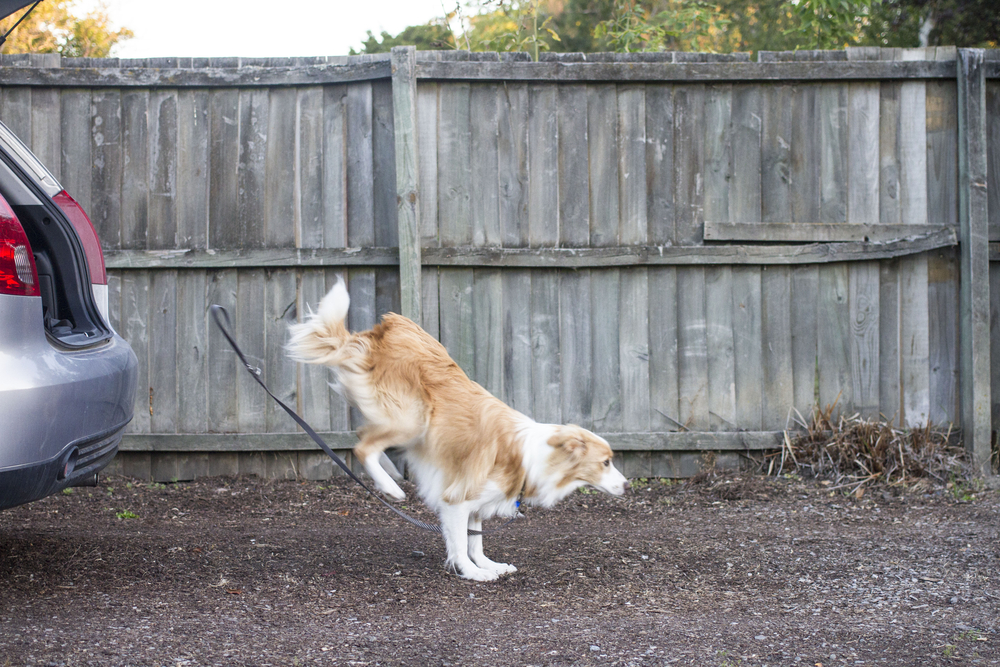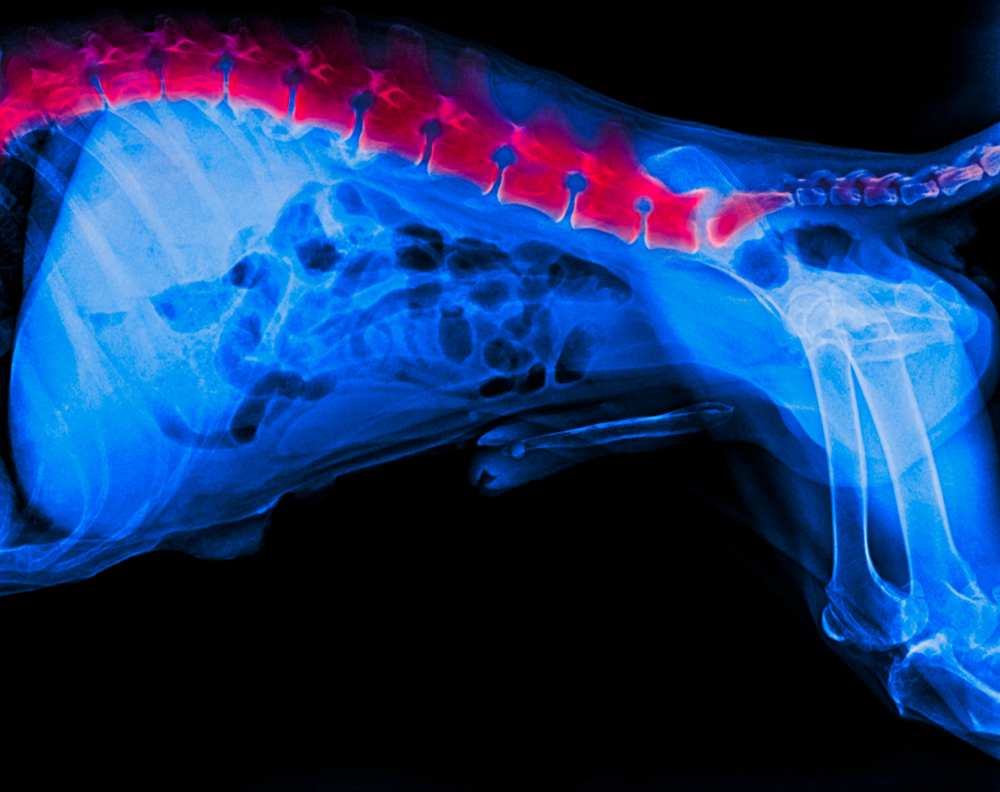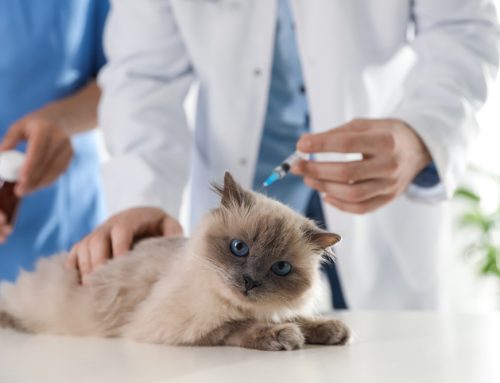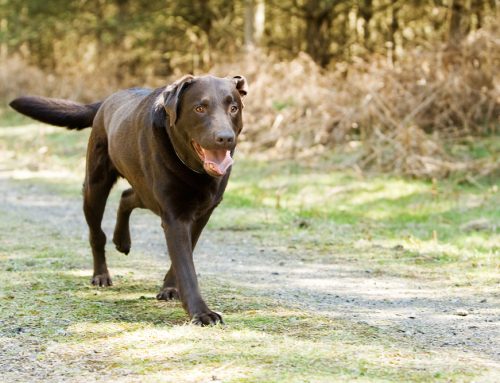Intervertebral disc disease (IVDD) is a canine spinal condition that occurs when displaced disc material compresses the spinal cord, caused by slow progressive disc degeneration or sudden trauma, and results in a dog experiencing significant pain, weakness, nerve disruption, and—in severe cases—mobility impairment or paralysis. If your dog suffers from, or is at-risk for, IVDD, our Boca Midtowne Animal Hospital team can help. We respond to your most frequently asked IVDD questions.
Question: What is intervertebral disc disease in dogs?
Answer: Between each bony vertebra surrounding the spinal cord is a cushion-like substance (i.e., an intervertebral disc). When the spine flexes or compresses, the discs act as shock absorbers for the fragile spinal cord. Each disc has two layers—a fibrous exterior shell enclosing a soft gelatinous interior—similar to a jelly donut.
If the disc is damaged—either by a sudden (i.e., acute) concussive force, or by a slow (i.e., chronic) progressive deterioration—one or both disc layers push upward, pinching the spinal cord. This compression alters communication between the brain and the body, causing pain and—in severe cases—paralysis.
Q: Are some dogs more likely to develop IVDD?
A: Although any dog can experience IVDD, breeds who are longer than they are tall (i.e., long-bodied) and chondrodystrophic (i.e., short-legged, long-bodied) most commonly develop this painful condition. The most at-risk purebred and mixed-breed combinations include:
- Dachshund
- Shih tzu
- Lhasa apso
- Beagle
- French bulldog
- Cocker spaniel
- Chihuahua
- Poodle
- Cardigan and Pembroke Welsh corgi
- Doberman pinscher
- Labrador retriever
- German shepherd dog
Q: What are IVDD signs in dogs?
A: Disc herniation is classified as Hansen type 1 or type 2. Learn which type your dog is most likely to develop, so you know to look for the type’s specific, subtle signs:
- Type 1 — Most common in small dogs, Hansen type 1 rupture involves subclinical (i.e., unnoticeable) gradual disc degeneration, but herniation appears suddenly, and is often associated with a physical action, such as jumping or falling. In a type 1 rupture, the disc’s previously jelly-like middle has hardened, breaking through the outer layer, and erupting into the spinal canal.
- Type 2 — Most common in larger breeds (e.g., German shepherds, Labradors), a Hansen type 2 disc rupture occurs more gradually than type 1, and involves the entire hardened disc (i.e., both layers), which presses upward against the spinal cord—similar to human disc herniation. Because this type progresses extremely gradually, a type 2 herniation is usually not attributed to a specific physical event or activity.
No matter your dog’s IVDD type, signs may be acute or progressive. Keep an eye out for disc herniation signs that include:
- Reluctance to move
- Posture change
- Knuckling (i.e., standing on toes, or dragging feet)
- Shaking or trembling
- Lameness
- Limb or body weakness
- Inability to urinate or defecate
- Paralysis
Successful IVDD treatment hinges on prompt diagnosis and intervention. If your pet is experiencing IVDD signs, contact our Boca Midtowne Animal Hospital team.
Q: Will my pet need surgery?
A: If IVDD is suspected, Dr. Man will perform a complete physical assessment and neurological exam—a nerve and reflex evaluation that pinpoints the affected spinal area. To confirm the diagnosis and rule out other causes, we may recommend diagnostic imaging such as X-rays, computed tomography (CT), or magnetic resonance imaging (MRI). Depending on your pet’s results, IVDD treatment may include the following:
- Surgery — Surgery involves removal of the vertebral canal’s top portion to expose the spine, then careful removal of abnormal disc material. Surgery is typically recommended for dogs who have:
- Severe pain
- Poor or absent conscious proprioception (i.e., your dog’s ability to place their feet correctly)
- Inability to stand or walk
- Inability to feel deep pain
Prognosis heavily depends on how quickly spinal cord pressure is relieved, and dogs do best when surgery is performed within 24 hours of the onset of signs. Postoperative care includes prolonged rest in a cage, and nursing care to prevent additional trauma, pain, or spinal swelling. Veterinary rehabilitation—including strengthening and coordination exercises—can help pets recover quickly.
- Conservative (i.e., nonsurgical) management — If surgery is deemed medically unnecessary, or too costly for the owner, conservative management can be successful. The nonsurgical recovery process relies on strict rest in a cage to minimize a dog’s spinal trauma and pain. They must be kept as calm and still as possible, going outside only to do their business. To ensure your dog remains comfortable and relaxed, your veterinarian may prescribe pain medications and sedatives. After several weeks’ rest, your dog will be re-evaluated to determine whether their swelling and pain have subsided, and your veterinarian may recommend a gradual and cautious return to function—ideally with rehabilitation.
Q: What is the prognosis for dogs with IVDD?
A: With the exception of severe injury, dogs who have disc disease typically experience a good outcome when treatment and pain control are provided early. Although the healing and recovery process are extremely gradual, your dog can enjoy a relatively normal quality of life—with a few activity modifications—if you dedicate yourself to their long-term rehabilitation, and follow your veterinarian’s orders.
Surgical success hinges on a timely diagnosis. Dogs who have prolonged weakness, pain, or paralysis can experience irreversible mobility loss. For these dogs and those who do not respond to surgery, assistive devices, such as carts and slings, and routine nursing care (e.g., bladder expression, resting position rotation) can help them maintain a good quality of life.
Q: Can my pet relapse after treatment?

A: IVDD is chronic, and although surgery eliminates further rupture of the treated disc, surrounding discs are susceptible to herniation. Conservatively managed pets may experience recurrence or flare-up after physical activity, and disc rupture in other areas.
IVDD can be concerning, but if your dog is diagnosed with this condition, keep in mind they can experience a relatively normal and comfortable life if prompt treatment is provided. If you have additional questions, or if your dog experiences sudden weakness or paralysis, contact Boca Midtowne Animal Hospital, or your nearest emergency veterinary hospital for after-hours care.








Leave A Comment